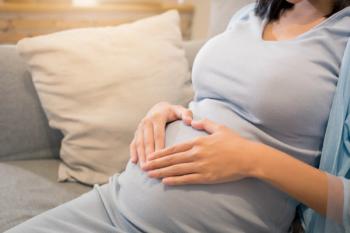
Low recurrence found after uterine rupture in pregnancy
A new study presented at the 2025 ACOG Annual Clinical & Scientific Meeting found that while recurrent uterine rupture is rare, patients with a history of rupture face a significantly increased subsequent risk of preterm delivery.
Patients with subsequent pregnancy after uterine rupture are at an increased risk of preterm delivery, though recurrent uterine rupture is rare, according to a recent study presented at the 2025 American College of Obstetrics & Gynecology Annual Clinical & Scientific Meeting in Minneapolis, Minnesota, from May 16 to May 18, 2025.1
Pregnancy after uterine rupture
A rate of up to 42% has been estimated for uterine rupture recurrence in subsequent pregnancies, leading the American College of Obstetrics & Gynecology to recommend planned cesarean section at 36 to 37 weeks’ gestation to prevent this outcome. Expert opinion is usually referenced during management because of its rarity for recurrence.
“We aim to review outcomes in subsequent pregnancies to optimize management going forward,” wrote investigators.
Rates and outcomes of uterine rupture
The retrospective cohort study included uterine rupture cases occurring in a large county hospital from 2009 to 2023. Exclusion criteria included hysterectomy or sterilization during rupture. Electronic medical records were assessed to obtain demographic and outcome data of patients with subsequent pregnancy and delivery.
Eighty-nine uterine rupture cases were reported, indicating a rate of 5 per 10,000 births. Forty-four patients were not sterilized, 12 of whom underwent subsequent pregnancy, with a mean gestational age at delivery of 35 5/7 weeks.
Scheduled cesarean delivery was reported in 42% of patients with subsequent pregnancy, occurring at an average gestational age of 37 6/7 weeks. Half of the study population with subsequent pregnancy presented in labor, and only 1 had prelabor rupture of membranes at an average gestational age of 34 2/7 weeks.
Delivery timing and rupture recurrence
Of patients presenting in labor, 4 had delivery before 36 weeks’ gestation. Additionally, 4 of 5 scheduled cesarean deliveries occurred without complications. The fifth cesarean delivery was complicated by placenta accreta spectrum, requiring planned hysterectomy.
There were no instances of recurrent uterine rupture noted. This highlighted a low incidence or recurrent uterine rupture, though subsequent pregnancies often ended in preterm labor.
“These findings favor an earlier delivery in patients with a history of uterine rupture,” wrote investigators.
Maternal and fetal health implications
Uterine rupture is most common in patients with a prior cesarean delivery.2 Types of uterine rupture include a complete rupture with all 3 layers of the uterine wall torn and an incomplete rupture that does not go through all 3 layers of the uterine wall. The former is a severe complication requiring immediate treatment.
Multiple health risks are associated with uterine rupture. Without the protection of the uterus, the fetus is at risk of reduced heart rate, being left without oxygen. This can lead to brain damage or suffocation, highlighting the urgency for providers to remove the baby and repair the uterus.
Alongside a prior uterine rupture, uterine trauma and surgery have been reported as risk factors. Patients with uterine rupture may present with fetal distress, low blood pressure, severe abdominal pain, vaginal bleeding, constant contractions, and slowing or halting labor.
These symptoms may allow providers to take precautions prior to delivery. Therefore, the Cleveland Clinic recommends that patients share their full medical history with providers to make these symptoms easier to identify.
References
- Yeh LB, Mulder I, Wells CE. Pregnancy after uterine rupture: An analysis of obstetric outcomes. Abstract. Presented at: 2025 American College of Obstetricians and Gynecologists (ACOG) Annual Clinical and Scientific Meeting. May 16-18, 2025. Minneapolis, Minnesota.
- Uterine rupture. Cleaveland Clinic. Accessed May 14, 2025.
https://my.clevelandclinic.org/health/diseases/24480-uterine-rupture .
Newsletter
Get the latest clinical updates, case studies, and expert commentary in obstetric and gynecologic care. Sign up now to stay informed.











